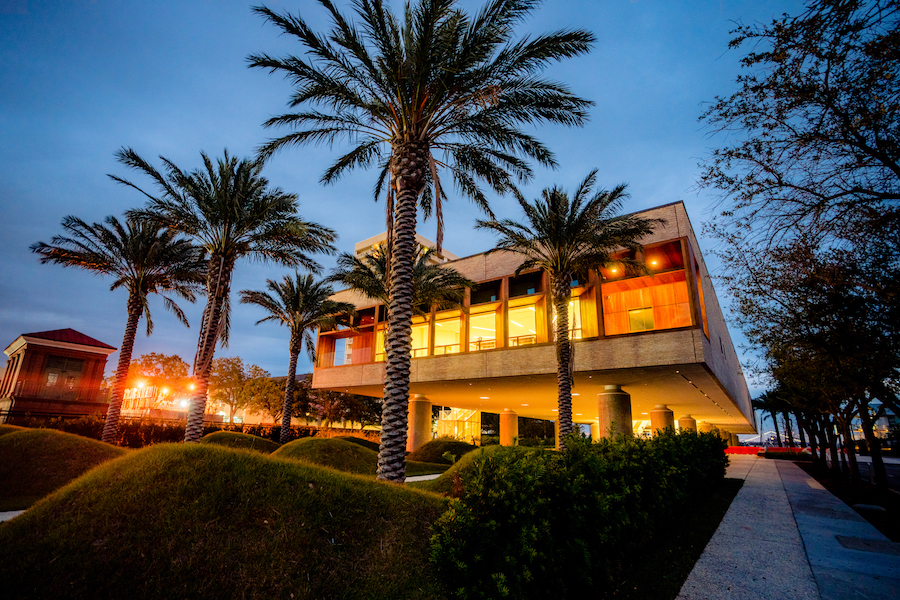Island Packet: 3 cool experiences that will bring me back to Grove Plantation
There’s no particular reason I had not yet visited Grove Plantation near Edisto Island, a centerpiece for the Ernest F. Hollings ACE Basin National Wildlife Refuge that also serves as an office and visitors center.
But finally, spurred by a project I’m taking on for this blog, I made my first trip there Sunday.
I’ll spare you the throat-clearing about the history and amenities at Grove Plantation. You can read those at the links I provided. And I’ll not go into much detail about the project to which I alluded — an interactive graphic with information about some of the best places to view wildlife, birds in particular — because you’ll be reading more about it later.
Instead, here are three cool highlights from my trip that ensure my visit won’t be my last:
My first encounter with feral pigs: At least, I think they were feral. I know those who raise pigs sometimes do not keep them penned, opting to let their hogs roam the woods.
I pulled up to the gate outside Grove Plantation at about 7:35 a.m. to find it closed. The sign said the gates open at 8 a.m. OK, I thought to myself, I’ll park the vehicle and walk one of these trails to the either side of the entrance until everything swings open. So I started down an old railroad bed, where the Seaboard Coast Line once ran.
I was looking at an area of swampy bottom when, out of the corner of my eye, I saw something that looked like a small mammal crossing the path several hundred yards ahead. I snapped my head around and waited.
A few moments later, I saw a black hog and a few piglets crossing. I fumbled with my camera and took a few stills and some video that is degraded by the incessant background noise of my lens trying to focus in low light.
I started walking that way, to see if I could get closer, but when I saw no further signs of pigs, I crossed over to an adjacent path. As soon as I emerged from some underbrush, I spotted about a dozen little piglets rooting around in the leaves for whatever it is little piglets root around for.
Acorns, perhaps?
Again, I fumbled with the camera and managed to get a little more video. I would have asked someone at the visitor center if these were, indeed, feral hogs and not some NWR experiment, but when I walked back to the gate, I realized I had misread the sign. The gate and center open at 8 a.m. … Monday through Friday. Those gates were staying closed today. Oh, well. Still, my day was off to a good start. These were pigs in the wild, which I had never seen before, even if the pigs themselves are not wild.
Here’s the clumsy video:
An American bittern holds his gaze: It’s striking how many neat things first come to my attention through the corners of my eyes. Here’s another example.

While walking along a rice-field dike, I thought I saw a duck in very close range as he slipped under the water. I stopped, turned and waited for it to surface.
Nothing.
I was about to start walking again, but before I did, I pulled out my iPhone to make a quick Instagram post. As I prepared to take a landscape photo of these beautiful surroundings, I noticed a short little bird standing in the marsh grass directly in front of me. Not only was this my first sighting of an American bittern, the smallish member of the heron family was striking a classic pose.
When these birds are startled, they freeze and stand with their necks straight up in the air. Looking at the pattern on the neck and belly, it’s easy to see why this might be an effective strategy — the bird mixes in pretty well with the surrounding grass. I moved slowly to raise my camera, hoping this wouldn’t send him scurrying. It didn’t. I got the vertical shot you see below.
Pressing my luck, I decided to move to the side to see if I could get a shot from the side. Bingo!
I stood there checking him out for another minute or so, my heart racing as I considered how lucky I was to be this close to such unique behavior. Then, quietly and slowly, I resumed my walk. That bittern might still be standing there at attention.
Bald eagle sightings: One would think a majestic bird would make majestic noises to match. Not so. Bald eagles have a desperate, grating screech, like a toddler getting his finger smashed in a car door.
I was only a few hundred yards removed from my bittern experience when I caught a fleeting glimpse of an eagle passing overhead. A few minutes later, I heard the screech, but because I was under heavy cover, I could’t figure out exactly where it was coming from. Moving slowly, I looked up into the bough of an oak to see an eagle. It appeared to be checking me out.
And it was neither happy, nor impressed by what he saw.
It left the branch and circled overhead several times. A second eagle appeared high in a tree ahead of me. Then, the first eagle circled back and perched high in a pine behind me. That’s when I first turned around and realized I was standing about 30 yards from that tree, which contained the eagles’ nest. (For those of you who have not seen a nest at close range, imagine a car port just big enough to park a Volkswagen Beetle.)
I took a few more photos and a little video but decided … um … perhaps it was best not to disturb these birds further. As Napoleon Dynamite might observe, eagles have large talons.
Besides, I couldn’t take the racket any longer.

If you’re interested in a trip to the ACE Basin NWR, here’s a trail map, and there’s a road map below. I can’t guarantee it, but I bet if you walk slowly enough and look through the corners of your eyes, you’ll see something that makes your visit worthwhile.
Join The Conversation
The Island Packet is pleased to provide this opportunity to share information, experiences and observations about what’s in the news. Some of the comments may be reprinted elsewhere in the site or in the newspaper. We encourage lively, open debate on the issues of the day, and ask that you refrain from profanity, hate speech, personal comments and remarks that are off point. Thank you for taking the time to offer your thoughts.




